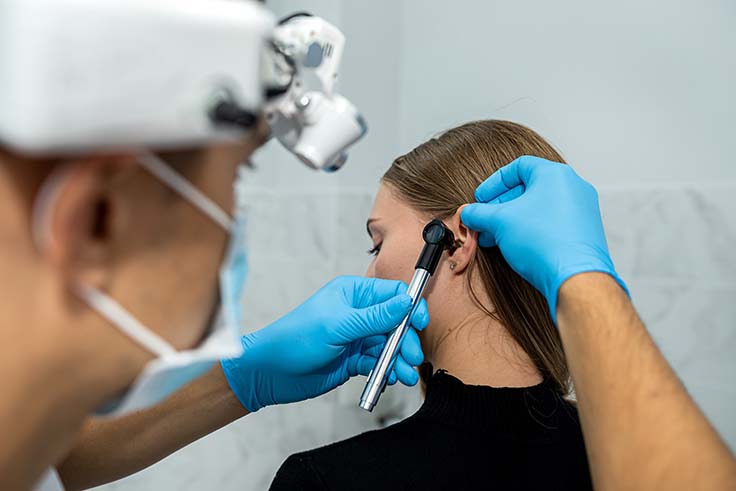Dr Ronald Chin’s Explanation of the Weber Test
Dr Ronald Chin’s Explanation of the Weber Test
You perform the Weber test by striking the tuning fork and gently pressing it against the centre of the person’s forehead.
In a person with normal hearing, the sound from the tuning fork travels equally to both ears. This happens because the vibrations properly transmit through the middle ear, and ear canals are received symmetrically by the cochlea.
However, if a person has conductive hearing loss, something is blocking the sound from escaping correctly. So, you’ll find it louder in the impaired ear. The cochlea receives more energy or vibration because it’s trapped, making it seem louder to us.
On the other hand, if a person has sensorineural hearing loss, the sound will appear quieter in the impaired ear. This is because there is a problem with the cochlea or the nerves connected to it, which reduces the ability to pick up the vibrations and transmit them to the brain.
Glue ear, after draining the ear drum
Glue ear, intact ear drum
- About the Author
- Latest Posts
Dr Ronald Chin is an Australian trained Otolaryngologist Head and Neck Surgeon.
After graduating as a Fellow of the Royal Australasian College of Surgeons, Dr Chin undertook further specialised training in Head and Neck Cancer at the Royal College of Surgeons in Ireland.
He has published many research papers and is an active teacher and scholar.
As part of his subspecialty training, Dr Chin has training in Laser, Da Vinci Robotic, Flex Robotic and complex surgical techniques.
In addition to specialised Head and Neck Cancer, Dr Chin also enjoys general adult and paediatric ENT Surgery and practices sinus, snoring/sleep and general paediatric ENT Surgical procedures.
Dr Ronald Chin works as a general Otolaryngologist, offering a wide range of surgical and non-surgical treatments including ear surgery, nose surgery and throat surgery. He provides treatment for chronic conditions such as tonsillitis, sinus problems and problems with hearing.
He is also involved in the diagnosis and treatment of many conditions such as facial paralysis, head and neck cancer and sleep apnea. As well as performing surgery on children, he also provides specialist care for adults, including the treatment of throat disorders, voice loss and ear problems.
Dr Chin has also served as a Conjoint Associate Professor at the University of Sydney, a Conjoint Associate Professor at Western Sydney University and an Adjunct Associate Professor at the University of Technology Sydney.








